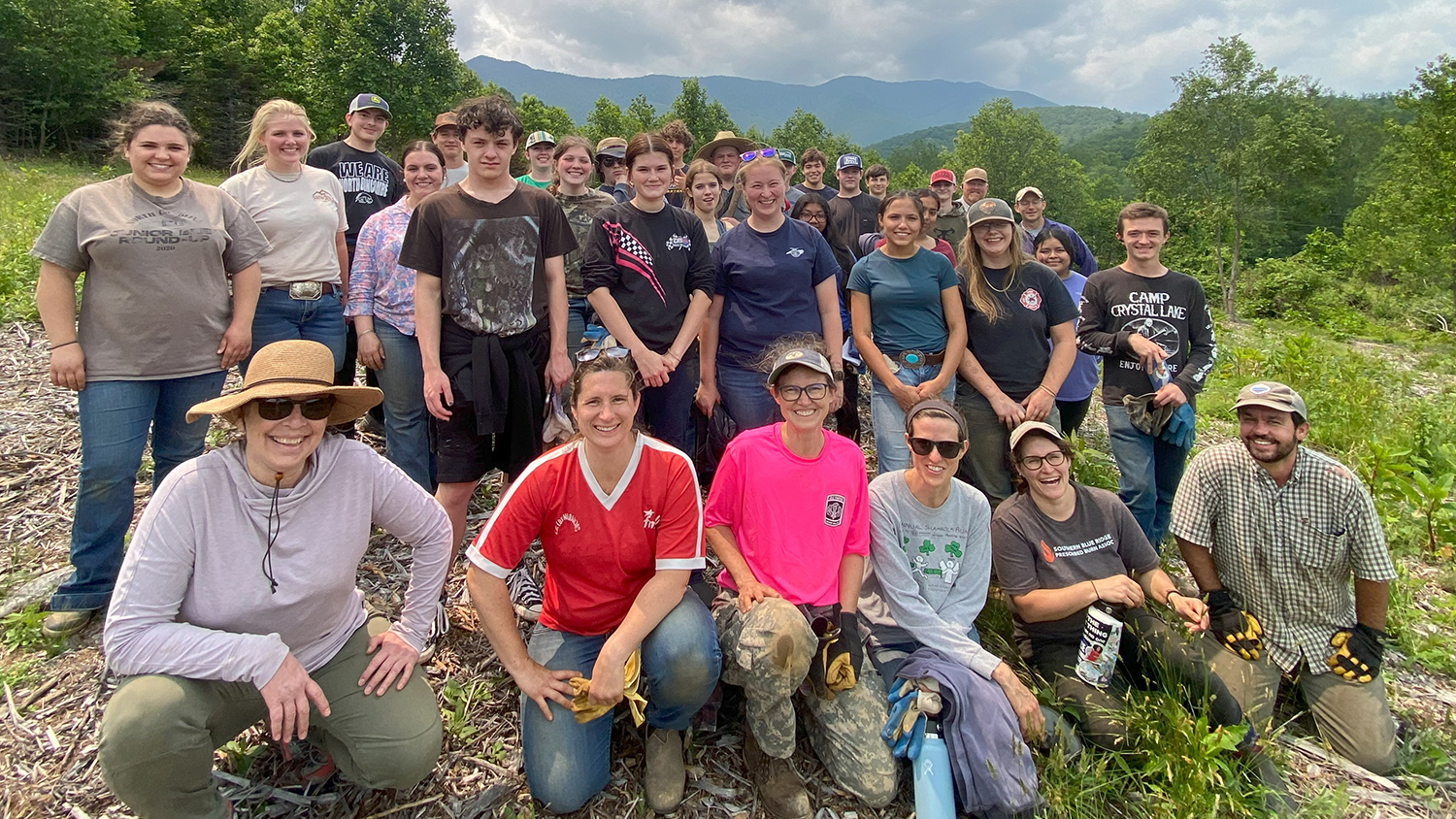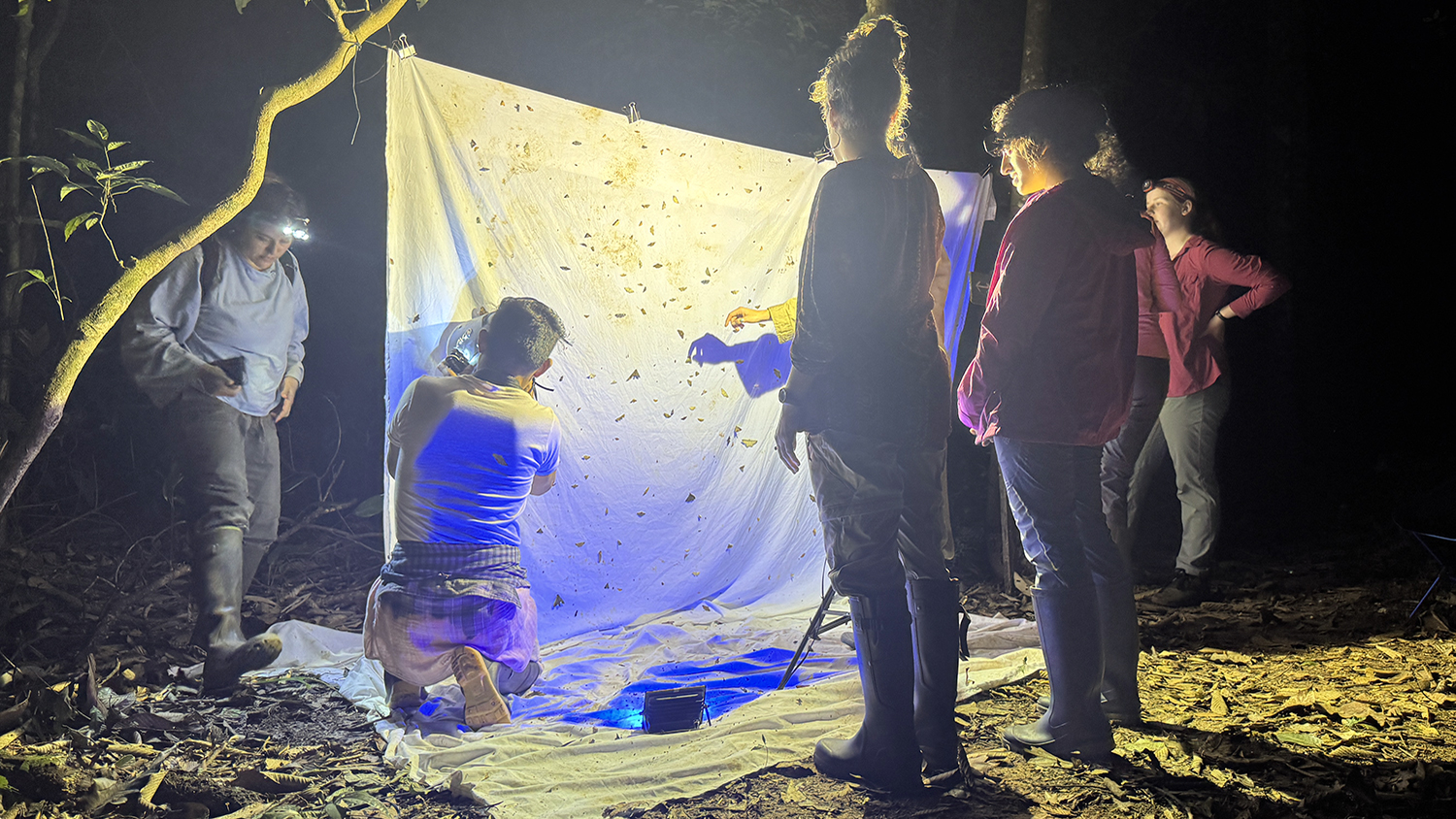Closing the loop
Biologists team with engineers to develop economical system for producing biofuels from algae.
Scientists have been working for decades to make algae a viable source for the biofuels of the future. But so far, no one’s figured out a way to make algae production profitable at the scale needed to make a dent in the problem of diminishing petroleum reserves.
But N.C. State University biologists and engineers are out to change that. With a four-year, $2 million Emerging Frontiers of Research and Innovation grant from the National Science Foundation, they are closing the loop, so to speak, on the problem.
Their goal is to develop a sustainable photobioreactor system that can be economically scaled up for commercial production of transportation fuel.
The envisioned system would be maximally closed, meaning that, once built, it would require minimal input, producing algae and using innovative approaches for harvesting and extracting the oil and recycling nutrients from the remaining algal biomass. The system would require little to sustain itself other than sunlight, carbon dioxide, recycled nutrients and seawater. The bioreactor would also support balanced temperature, light and pH levels to create the kind of stable environment needed to hold down costs.
As part of that work, the N.C. State team is developing computer-based tools that will allow those interested in adopting such a closed bioreactor system to analyze how different factors would affect the costs and the environmental impacts, from start to finish.
Heading the N.C. State project team are Drs. Amy Grunden and Heike Sederoff, of CALS’ Department of Plant and Microbial Biology, and Drs. Francis de los Reyes, Joel Ducoste and Ranji Ranjithan, from the College of Engineering’s Department of Civil, Construction and Environmental Engineering.
The idea for using algae for energy production can be traced to efforts in the 1950s to use algae-produced methane gas. That topic was revisited during the 1970s’ energy crisis, and then the 1980s saw a push for research into using algae for fuel production.
Right now, despite widespread interest in biofuels and legislation aimed at increasing their use, these renewable fuels account for little more than 7 percent of transportation fuels. And that’s because few alternatives make economic sense compared to petroleum-based fuel.
But the N.C. State team still sees algae as particularly promising. Not only are they biodegradable and harmless if spilled, they can yield 10 to 100 times more fuel in the same space as other biofuel crops, with no need for fresh water.
Indeed, the U.S. Department of Energy has estimated that if algae-derived oil could replace all the petroleum fuel in the United States, it would require an area only about half the size of Maine – which is just one-seventh of the area currently used by U.S. corn for ethanol, food, feed and other products.
The system that the N.C. State scientists are designing would use marine microalga of the genus Dunaliella, bioengineered with extremophile genes to convert carbon dioxide into oil at a higher rate and to produce enzymes that would digest algal waste biomass to recycle nitrogen and phosphorus for algal cultivation.
That means there would be little chance of those nutrients contaminating ground water or creeks, rivers and lakes, as can happen with other crops.
Grunden and Sederoff think that the enzymes could also add value to the system if they are harvested for such uses as cleaning laundry and detoxifying pesticide spills and nerve gases like sarin.
Grunden is an expert in extremophiles, which are micro-organisms that survive in the Earth’s most extreme environments, and Sederoff focuses on the metabolic engineering of algae. They have patented a process for producing enzymes in algae for industrial use.
For the grant project, they have homed in on Dunaliella because it can double its mass every 30 hours, because it’s already being produced to feed farm-raised salmon and shrimp and because it has a cell membrane but no cell wall, which makes it easier to extract oils from the cells.
Also, as Sederoff points out, the Dunaliella production system wouldn’t compete with fresh water or fertilizer needed to produce food and feed for a rapidly growing world population.
“All this discussion of food and feed production versus fuel production, which has been a big deal with ethanol production – that is gone with our system,” Sederoff says.
“If we can make it economically feasible, this will be a transformative breakthrough in how you can produce fuel without significantly tapping into the natural resources – land, water or fertilizer sources – used to produce food and feed.”
In addition to being excited about developing the kind of commercially viable, environmentally sustainable oil-from-algae production system that scientists have been working toward for so many years, Grunden and Sederoff are also enthusiastic about the impact their grant-funded project will have on students – high school students, university undergraduate and graduate students and post-doctoral researchers.
College students and post-docs are already at work on the project, and the project team is collaborating with Research Triangle High School in Durham to develop related teaching modules and a working algal bioreactor for the school. They are taking what’s called a “flipped” approach, where homework, usually reserved for practice of classroom-based instruction, is spent watching online video lessons, while class time is spent on seeing how the principles they learn about online actually perform during laboratory practice.
In the process, all the students are learning the importance of bridging traditional disciplines to solve society’s greatest challenges, Sederoff said.

Already, because of multidisciplinary approach taken in the algal biofuels projects as well as other promising biology-engineering collaborations, N.C. State has created a Chancellor’s Faculty Excellence program cluster called Integrated Synthetic and Systems Biology. As part of the initiative, the university has hired a faculty member and is seeking to fill other new positions in the cluster.
The goal of these new faculty members will be to use synthetic technology and engineering to create novel components and pathways that overcome barriers in natural systems and thus improve production of food, fiber, fuel, medicine and more.
Sederoff, who coordinates that initiative, says “the multidisciplinary approach we are taking is, in my mind, a key connection for developing anything in the future.
“We, as biologists, are learning a lot of things about engineering and what we need to think about in biology to make the engineering possible – and vice versa.”
And Grunden points out that the collaboration has helped generate a better “understanding of the economics – of how the engineering tradeoffs or biology tradeoffs we make affect the bottom line.
“And really,” she adds, “it’s the bottom line that is going to make things a go or a no-go in the marketplace.”
—Dee Shore


